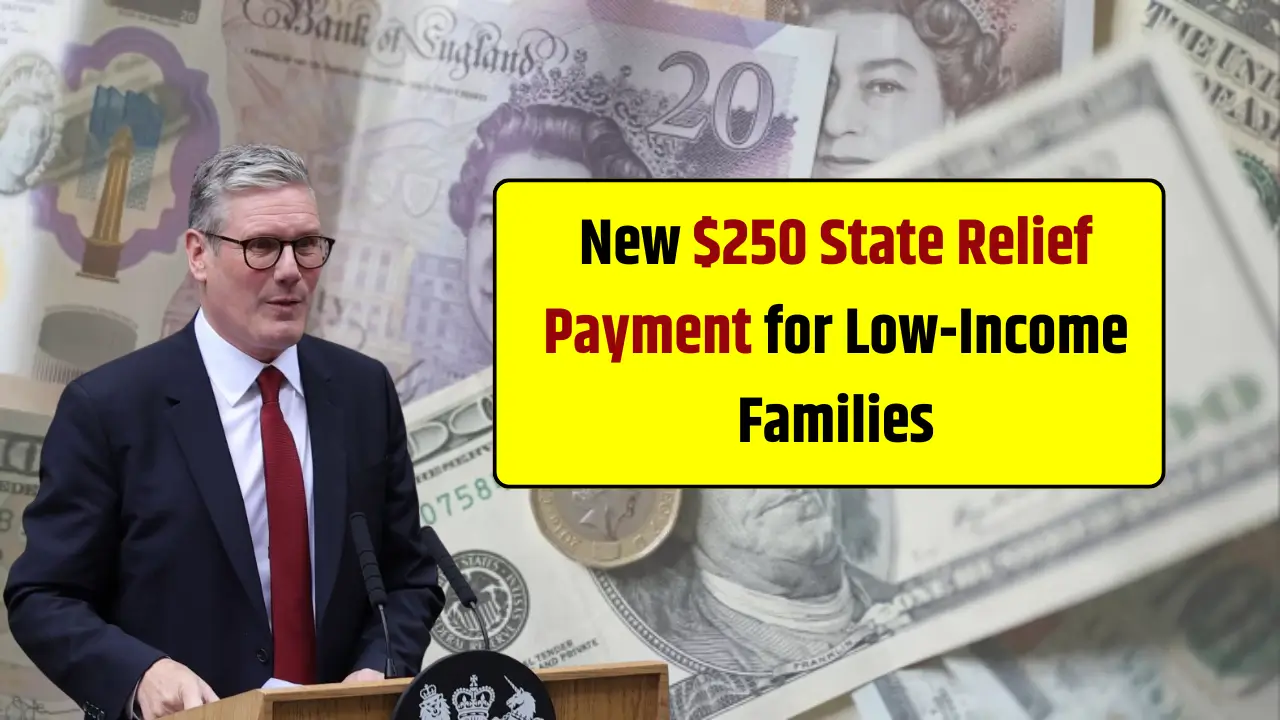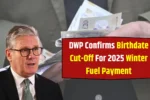New $250 State Relief 2025: A new $250 state relief payment is set to provide vital support for low- and middle-income families coping with the elevated cost of living in 2025. As inflation continues to impact essentials like food, energy, and rent, this relief measure is tailored to deliver timely assistance to households most affected by rising expenses.
This article provides a detailed overview of the $250 payment, including eligibility, distribution methods, application procedures, and its broader impact on family finances.
Why the $250 State Relief Payment Was Announced
Governments often respond to economic hardships with targeted relief programs. The $250 payment is designed to help families meet urgent needs, especially for groceries, utilities, and rent. Factors influencing the rollout include:
- High inflation: Substantial increases in prices for food, fuel, and other essentials.
- Rising housing costs: Many families face mounting rent and utility bills.
- Fixed or limited incomes: Seniors, single-parent households, students, and persons with disabilities often have incomes that do not keep up with inflation.
- Economic uncertainty: Pandemic recovery and other global events have put additional pressure on household finances.
Issuing a one-time direct relief payment is an effective way to ensure that support reaches targeted recipients quickly and efficiently.
Eligibility Criteria for the $250 Relief Payment
Eligibility for the $250 relief payment is determined using tax data or enrollment in existing benefit programmes. Most states and provinces will follow similar requirements, emphasizing no application is generally needed if a household already qualifies for established benefits.
Key criteria include:
- Income threshold: Most programs set a cap, commonly around $45,000–$65,000 individual annual income.
- Tax filing: Applicants or households must have filed their prior-year tax return (usually 2024) and had it assessed.
- Residency: Must be a resident of the state or province issuing the payment for the relevant period (for example, August or September 2025).
- Banking and mailing details: Recipients must ensure their direct deposit and mailing address information with authorities is accurate and up to date.
Families receiving social programs such as food benefits, unemployment insurance, child benefits, senior supports, or disability grants will likely be included automatically.
| Eligibility Requirement | Detail |
| Income cap | $45,000–$65,000, varies by region |
| Tax return status | 2024 tax return must be filed/assessed |
| Residency | Must be a resident in 2025 |
| Automatic payment | No separate application required |
| Beneficiary groups | Seniors, low-income workers, students, families, disabled persons |
Payment Timeline and Distribution
The relief payment is scheduled for August or September 2025, depending on the jurisdiction. Most payments will be made by direct deposit to the bank account registered with tax authorities or social programs. For households without electronic banking, paper cheques will be mailed and may arrive several days later.
| Delivery Method | Expected Arrival |
| Direct Deposit | Between mid and late September 2025 |
| Cheque by Mail | After September 30, 2025 |
How Much Will Recipients Get and Will It Affect Other Benefits?
The relief payment is a one-time sum of $250 per eligible individual or household. Authorities confirm that the payment is tax-free and will not reduce eligibility for other benefits such as food programs, housing allowances, disability grants, senior pensions, or unemployment insurance.
| Benefit | Impact of $250 Payment |
| Child benefits | No effect |
| Senior pensions | No effect |
| Disability grants | No effect |
| Taxable income | Not taxable |
Steps to Ensure You Receive the Payment
- File your tax return: Most relief payments are processed automatically from 2024 tax filings.
- Update banking/mail info: Ensure direct deposit or mailing address is current with revenue agencies or benefit programs.
- Check eligibility notifications: Watch for communications from tax authorities, social services, or official government sources.
- Monitor benefit accounts: Use online accounts to check payment status and history.
Low-income families failing to meet requirements, such as missing tax filing deadlines or having outdated banking details, could miss the payment.
The Broader Impact of the Relief Payment
While $250 may seem modest, it delivers essential support for families stretched thin by high inflation and stagnant incomes. The payment can help with:
- Essential groceries and food staples
- Utility bills to avoid disconnection
- Part of monthly rent
- Purchase of school supplies for children
By focusing on automated distributions, governments ensure that relief is not delayed by complex applications, and fewer households miss out.
Summary Table: $250 State Relief Payment Highlights
| Feature | Detail |
| Amount | $250 one-time payment |
| Eligible Groups | Low- and middle-income families |
| Income Limit | ~$45,000–$65,000 annually |
| Residency | State/province resident in 2025 |
| Payment Timing | August–September 2025 |
| Delivery Method | Direct deposit or cheque |
| Application Need | No, automatic via tax records |
| Benefit impact | Non-taxable, does not affect other programs |
Conclusion
The new $250 state relief payment for low-income families in 2025 is a critical measure aimed at helping vulnerable households cope with economic pressures. Automatic, tax-free, and timely, it demonstrates how targeted government responses can offer meaningful support without bureaucratic barriers.
Families should file their taxes, review account details, and monitor official announcements to ensure they do not miss this important financial aid.
Frequently Asked Questions (FAQs)
- Do I need to apply for the $250 relief payment?
No, the payment is automatic for those meeting eligibility criteria through tax and benefit records. - When will the $250 relief payment arrive?
Payments are expected to arrive via direct deposit between mid and late September, with cheques mailed afterward. - Who is eligible for the $250 state relief payment?
Low- and middle-income families who have filed their 2024 tax return and meet income and residency criteria. - Will the $250 relief payment affect my other benefits?
No, it is tax-free and does not affect existing program eligibility. - What should I do if I haven’t received the payment by October?
Check your benefit account, ensure your tax return and bank details are up to date, and contact the relevant agency if needed.






